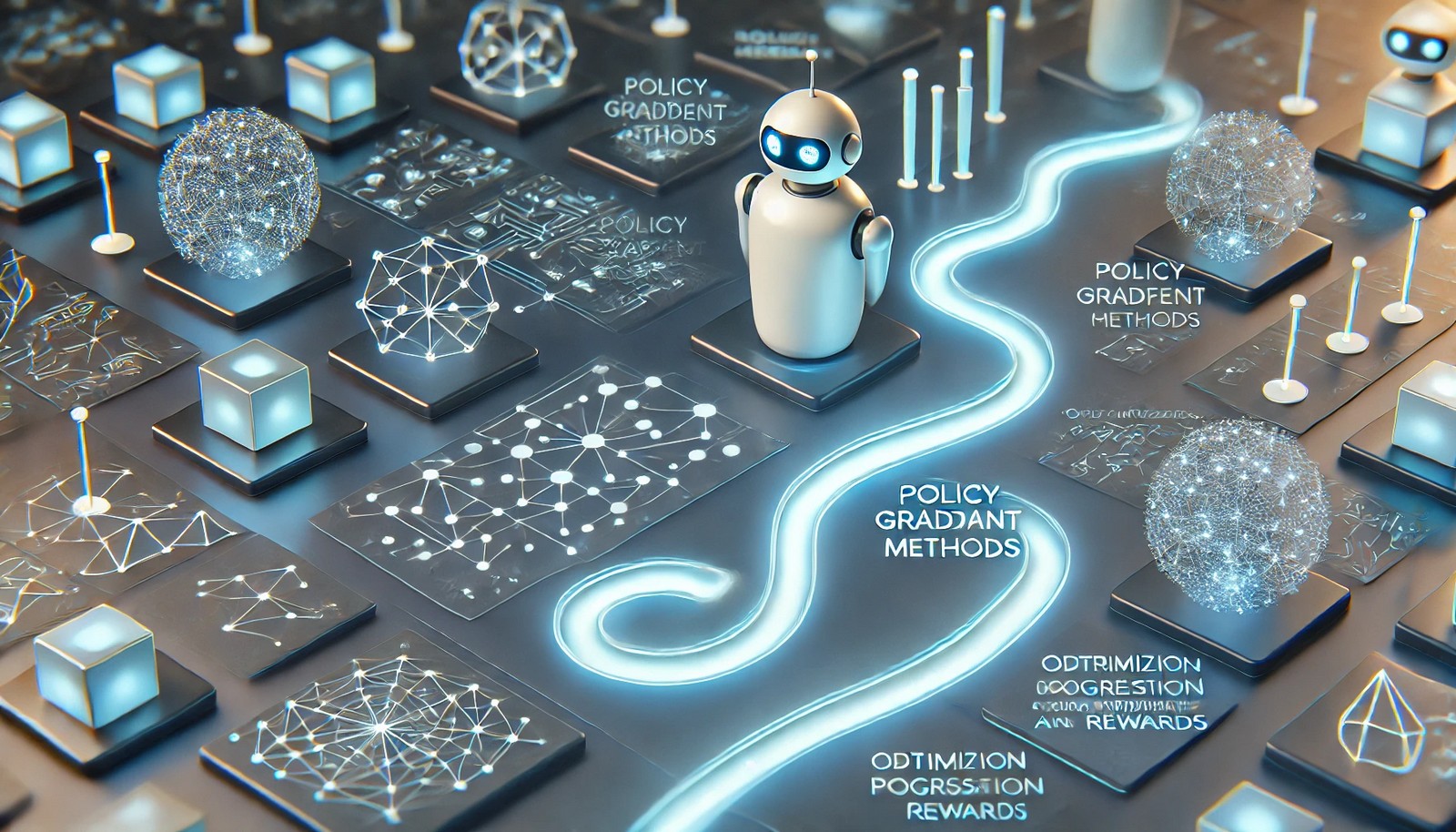Policy Gradient Methods

Quick Navigation:
- Policy Gradient Methods Definition
- Policy Gradient Methods Explained Easy
- Policy Gradient Methods Origin
- Policy Gradient Methods Etymology
- Policy Gradient Methods Usage Trends
- Policy Gradient Methods Usage
- Policy Gradient Methods Examples in Context
- Policy Gradient Methods FAQ
- Policy Gradient Methods Related Words
Policy Gradient Methods Definition
Policy Gradient Methods are a class of algorithms in reinforcement learning that optimize policies directly. Instead of approximating the value of each state or action, these methods adjust the probabilities of actions taken in various states to maximize expected rewards. Key techniques in policy gradients include the REINFORCE algorithm and Actor-Critic methods, both of which enable agents to handle complex tasks by learning optimal behaviors directly from experience.
Policy Gradient Methods Explained Easy
Imagine you’re learning a game, and each time you make a good move, you score points. Policy Gradient Methods work like this—they encourage the computer to remember the moves that lead to high scores and try them more often, helping it become better at the game over time.
Policy Gradient Methods Origin
Policy Gradient Methods emerged as a part of the reinforcement learning field in the 1980s, with significant advancements in the 1990s and early 2000s due to increased computational capabilities and the development of more sophisticated algorithms. These methods have become vital in modern AI applications like robotics and game-playing.
Policy Gradient Methods Etymology
The term "policy gradient" refers to the algorithm’s focus on gradually improving the "policy," or set of actions, by calculating gradients that guide adjustments toward maximizing reward.
Policy Gradient Methods Usage Trends
Policy Gradient Methods have gained prominence in recent years, especially with the rise of applications in game-playing AI, robotic control, and autonomous systems. The methods are celebrated for their ability to handle high-dimensional action spaces and are central to advancements in real-time decision-making AI systems.
Policy Gradient Methods Usage
- Formal/Technical Tagging:
- Reinforcement Learning
- Policy Optimization
- Decision-Making AI - Typical Collocations:
- "policy gradient algorithm"
- "reinforcement learning optimization"
- "stochastic policy gradients"
- "policy gradient methods in robotics"
Policy Gradient Methods Examples in Context
- In robotics, Policy Gradient Methods help robots learn to manipulate objects with precision by adjusting actions based on trial outcomes.
- AI in games like Dota 2 and Go uses Policy Gradient Methods to learn winning strategies by iteratively improving moves that maximize in-game rewards.
- Self-driving cars employ these methods to fine-tune driving policies, improving responses to real-world driving scenarios.
Policy Gradient Methods FAQ
- What are Policy Gradient Methods?
Policy Gradient Methods are algorithms in reinforcement learning that directly optimize a policy to maximize rewards. - How do Policy Gradient Methods differ from other reinforcement learning methods?
They adjust the probabilities of actions directly, while other methods often rely on value estimates. - What is the main benefit of using Policy Gradient Methods?
They can handle continuous and high-dimensional action spaces effectively. - Which algorithms use Policy Gradient Methods?
Common examples include the REINFORCE algorithm and Actor-Critic models. - Are Policy Gradient Methods sample efficient?
They often require many samples but are highly effective in complex environments. - What role do these methods play in AI gaming?
They enable AI agents to learn and refine winning strategies through iterative reward maximization. - How do Policy Gradient Methods handle exploration?
They use probability adjustments, allowing exploration by selecting varied actions. - Why are Policy Gradient Methods popular in robotics?
They allow robots to learn adaptable, precise control in dynamic environments. - What are the main challenges in implementing Policy Gradient Methods?
High sample requirements and potential for instability in training are common challenges. - How do Policy Gradient Methods apply to autonomous driving?
They help in learning adaptive driving policies, enhancing response accuracy in complex scenarios.
Policy Gradient Methods Related Words
- Categories/Topics:
- Reinforcement Learning
- Artificial Intelligence
- Robotics
- Game AI
Did you know?
Policy Gradient Methods have made breakthroughs in game AI, enabling OpenAI's Dota 2 bot and AlphaGo to achieve superhuman performance. These methods allow AI to learn complex strategies from scratch, revolutionizing how agents approach decision-making tasks in unpredictable environments.
PicDictionary.com is an online dictionary in pictures. If you have questions or suggestions, please reach out to us on WhatsApp or Twitter.Authors | Arjun Vishnu | @ArjunAndVishnu

I am Vishnu. I like AI, Linux, Single Board Computers, and Cloud Computing. I create the web & video content, and I also write for popular websites.
My younger brother, Arjun handles image & video editing. Together, we run a YouTube Channel that's focused on reviewing gadgets and explaining technology.



Comments powered by CComment